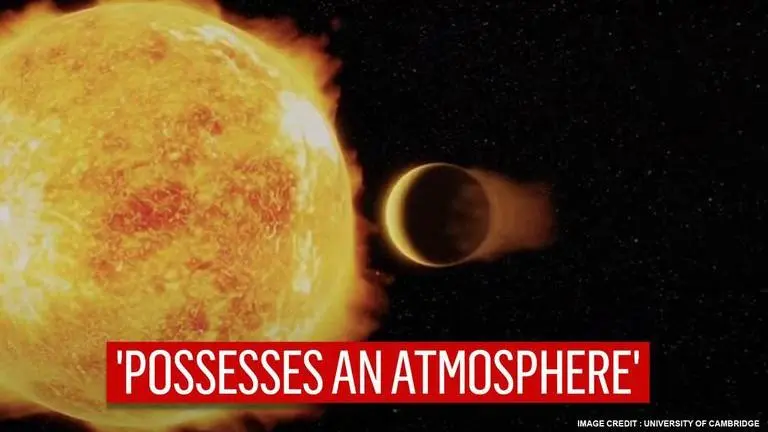Updated 26 October 2020 at 19:49 IST
Study about New Exoplanet finds atmosphere on 'ultrahot Neptune' planet 'shouldn't exist'
With an equilibrium temperature around 2,000 K, it is unclear how the ‘ultrahot Neptune’ managed to retain such an envelope, the scientists said in the study.
- Science News
- 3 min read

An international team of astronomers and researchers from the University of Cambridge said that the new class of planet, an ‘ultrahot Neptune’, orbiting the nearby star LTT 9779 is made of pure rock and water, and “possesses an atmosphere” despite its close proximity to the sun that radiates heat flares scorching the planet to1700 degrees Celsius. Discovered last month, the new planet dubbed as LTT 9779 is a Sun-like star that weighs twice as much as Neptune and is located at “a stone’s throw” distance of 260 light-years, has created a puzzle for the scientists for having an atmospheric blanket.
“With an equilibrium temperature around 2,000 K, it is unclear how this ‘ultrahot Neptune’ managed to retain such an envelope,” the scientist wrote in a study published in the journal Nature.
According to the observations, all previously known ultrashort-period planets, hot Jupiters, and rocky planets with sizes above 10 Earth radii, orbiting close to the sun that makes their orbital period shorter than one day. Such lack of planets of intermediate size has been interpreted as “the inability of low-mass planets to retain any hydrogen or helium (H/He) envelope in the face of strong stellar irradiation,” the researchers revealed. However, with an equilibrium temperature around 2,000 K, it is unclear how the ‘ultrahot Neptune’ managed to retain such an envelope, the scientists said in the study.
We've got 7 planets this week, among them an ultra-hot, ultra-short-period Neptune called LTT 9779 b discovered by #NASATESS. There are also seven new sets of companion star parameters. https://t.co/TuA9dyNpcb pic.twitter.com/5fIws8DOEe
— NASA Exoplanet Archive (@NASAExoArchive) September 24, 2020
Advertisement
Has twice the amount of iron
Furthermore, it was found that the newly discovered planet had twice the amount of iron in its atmosphere than the Sun and a year on it lasts only 19 hours. The ultra-hot Neptune was observed on the Transiting Exoplanet Survey Satellite (TESS), as part of its mission to discover small transiting planets orbiting nearby and bright stars across the whole sky. According to scientists, the transit signal from the planet’s body was confirmed in early November 2018, after it was observed from ESO la Silla Observatory in northern Chile.
HARPS uses the Doppler Wobble method to measure planet masses and orbital characteristics. When objects are found to transit, Doppler measurements can be organized to confirm the planetary nature,” researchers explained. Professor James Jenkins from the Department of Astronomy at the Universidad de Chile, who led the team, said, “The discovery of LTT 9779b so early in the TESS mission was a complete surprise; a gamble that paid off. The majority of transit events with periods less than one-day turn out to be false-positives, normally background eclipsing binary stars.”
Advertisement
Gave the ESO Colloquium today from the comfort of my own home. Discussed three new Neptunes led by our group, and our extensive collaboration, advertising the great work of students and postdocs alike. Also gave TESS extra credit in the title for our PFS discovered planet!! ;-) pic.twitter.com/vYrKxTWzmz
— James Jenkins (@ExoplanetJJ) October 15, 2020
Published By : Zaini Majeed
Published On: 26 October 2020 at 19:50 IST
